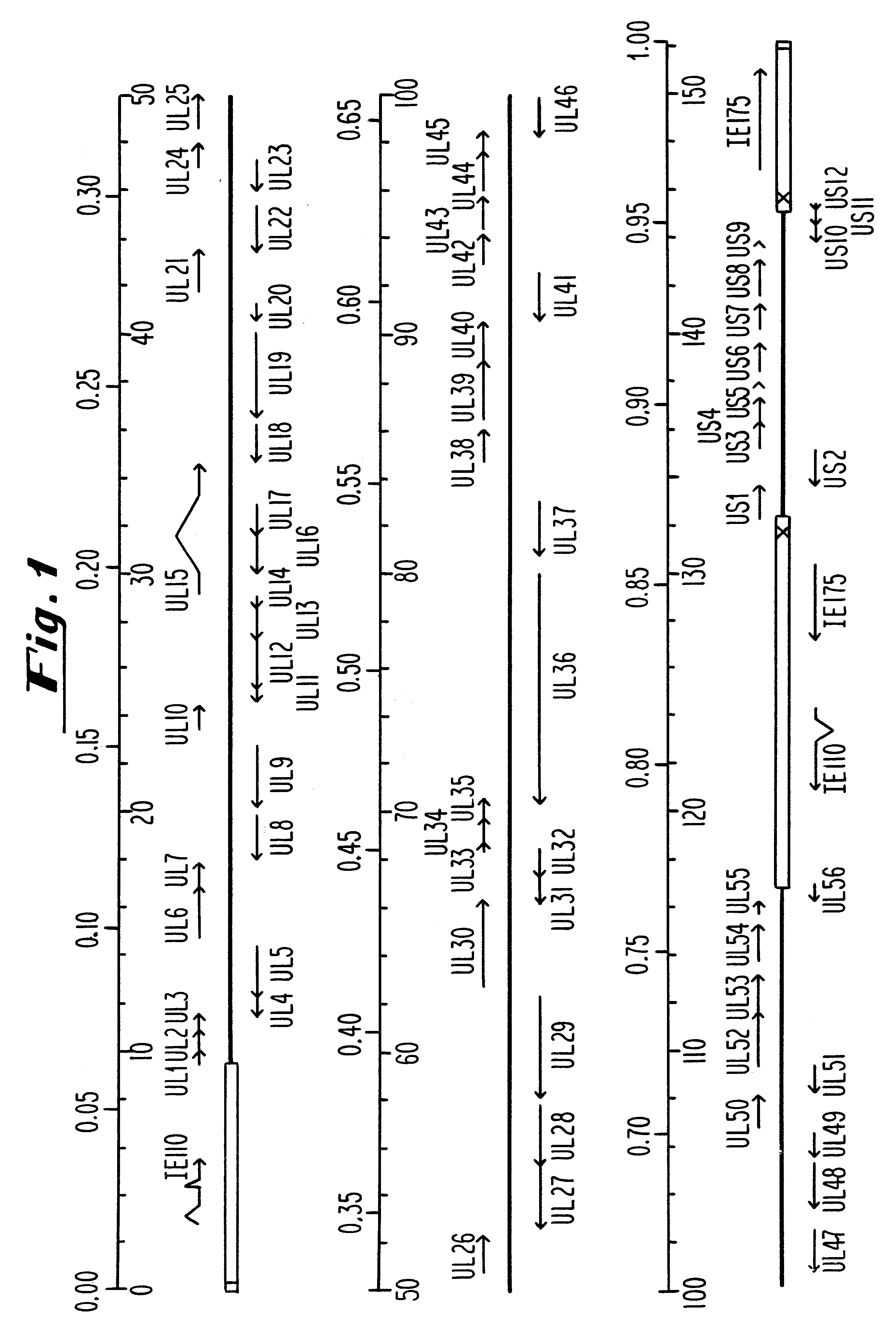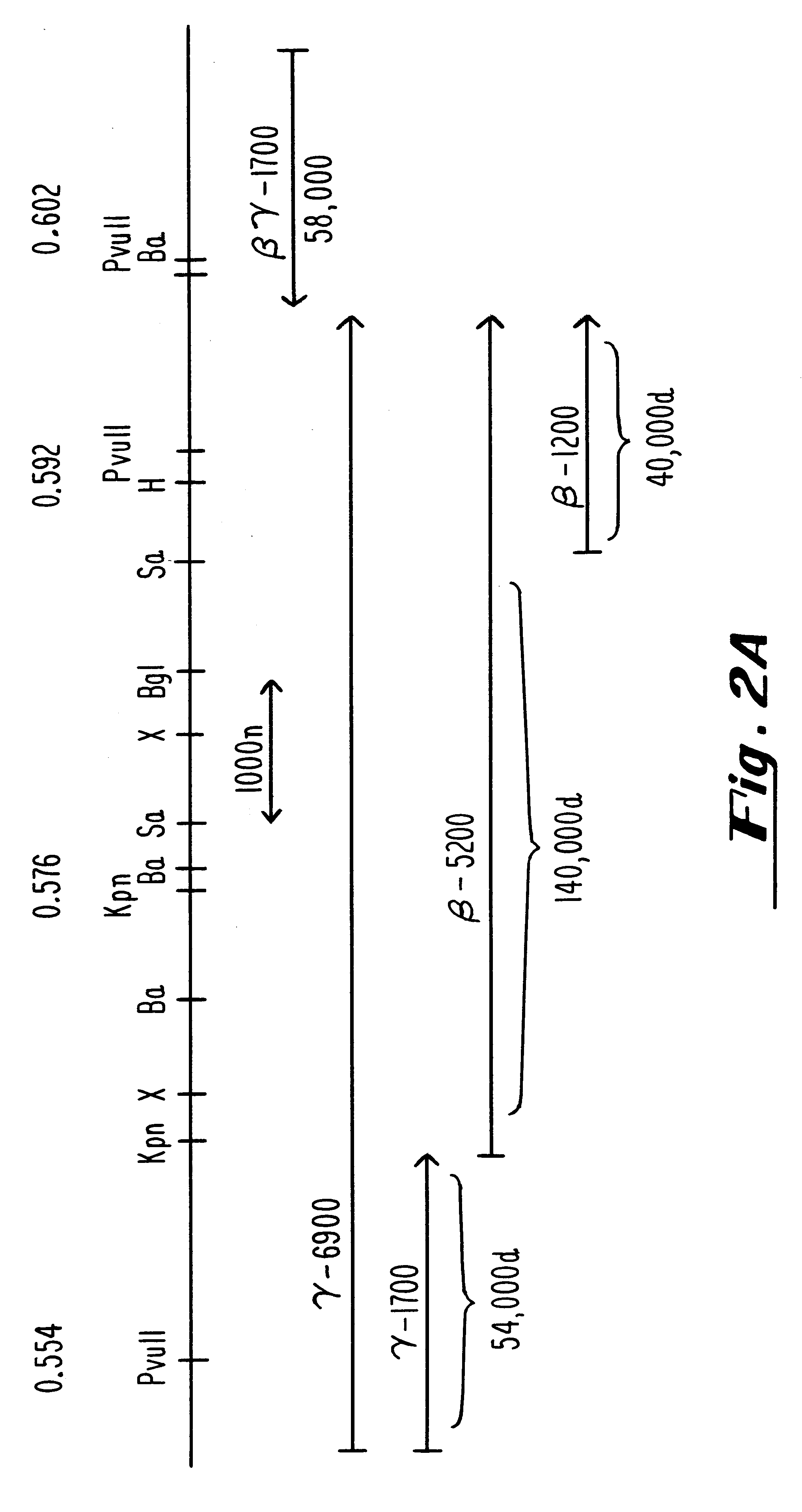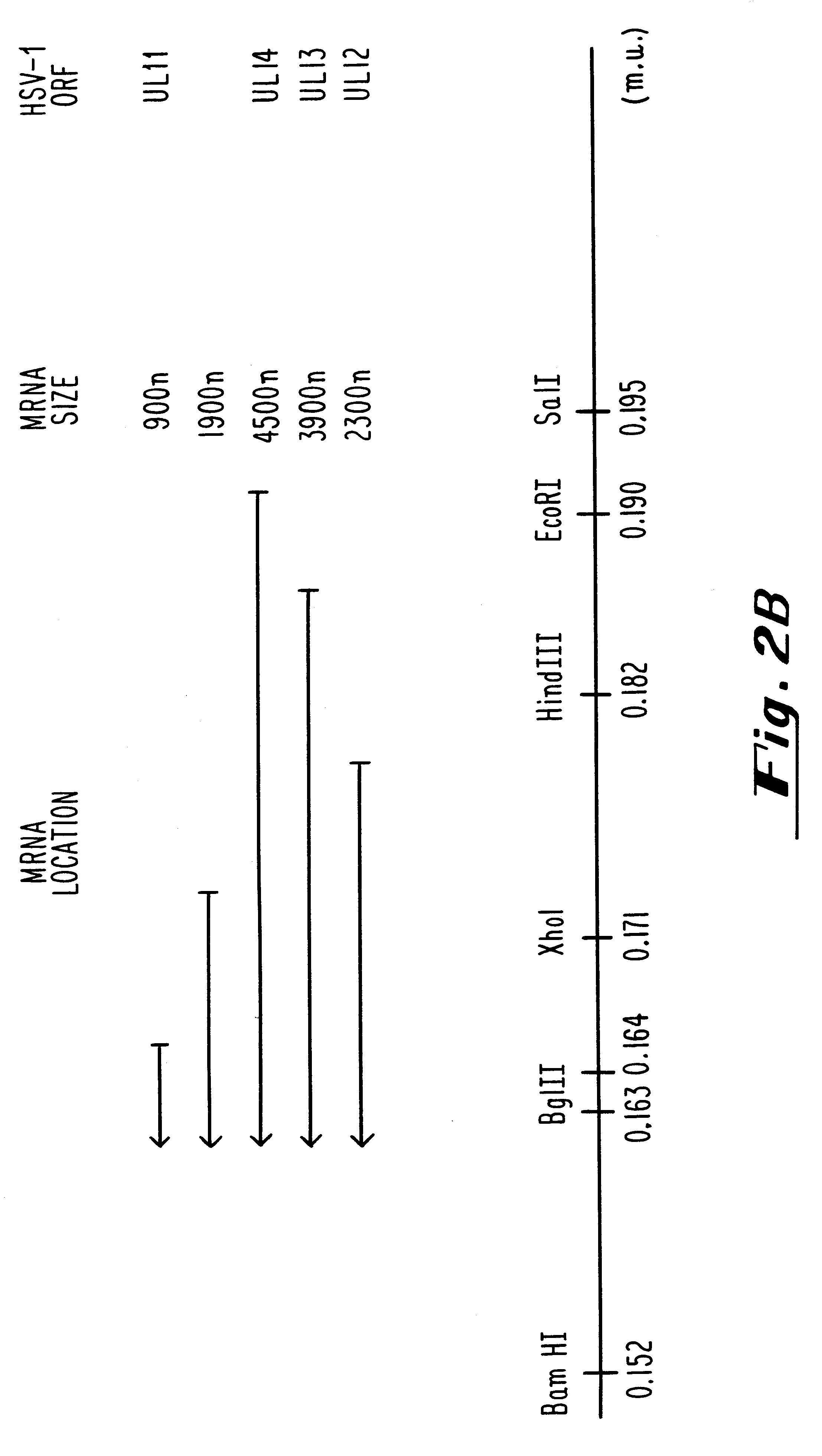Oligonucleotide therapies for modulating the effects of herpesviruses
a technology of herpesvirus and oligonucleotide, which is applied in the field of oligonucleotide therapies for modulating the effects of herpesvirus, can solve the problems of poor solubility of ara-a in water, high toxicity of idu treatment, and poor soluble in water, so as to reduce healing tie, reduce toxicity, and reduce the effect of severity
- Summary
- Abstract
- Description
- Claims
- Application Information
AI Technical Summary
Benefits of technology
Problems solved by technology
Method used
Image
Examples
example 1
HeLa (ATCC #CCL2) and Vero (ATCC #CCL81) cells used were obtained from the American Tissue Culture Collection. Cultures of HeLa cells were grown in Dulbecco's Modified Essential Medium (D-MEM) supplemented with 10% fetal bovine serum (FBS), penicillin (100 units / ml), streptomycin (100 micrograms / ml), and L-glutamine (2mM). Cultures of Vero cells were grown in D-MEN supplemented with 5.0% FBS, penicillin, streptomycin and L-glutamine. Stock cultures of HSV-1 (strain KOS) and HSV-2 (strain HG52) were grown in Vero cells using low multiplicity infections (multiplicity of infection [MOI]=0 02 plaque forming units [pfu] / cell).
To assess the ability of oligonucleotides to inhibit HSV replication, an infectious yield assay was employed. HeLa cells were seeded at a density of 5.times.10.sup.5 cells per well in Falcon 6 well tissue culture plates. cells were overlaid with 3 ml of medium (D-MEM with 10% FBS) and incubated at 37.degree. C. for 18-24 hours. Where appropriate, cells were overlaid...
example 2
The following studies were designed to test the effectiveness of an antisense oligonucleotide complementary to the HSV-1 UL13 gone on ocular HSV infections in a murine model of HSV ocular disease.
An anti-UL13 oligonucleotide, having the sequence GCCGAGGTCCATGTCGTACGC (ISIS 1082; SEQ ID NO.: 7), was dissolved in a buffer containing 50 am sodium acetate (pH 5.8) and 0.15 M NaCl for administration to 4 to 5 week old female BALB / c mice. Three different doses of ISIS 1082 were tested and treatment was begun 4 hours post-infection (pi) with a laboratory strain of HSV-1 which causes severe ocular infections. The strain HSV-1 KOS (Grau et al., Invest. Ophthalmol. Vis. Sci., 30:2474-2480 (1989) was used throughout these studies at an inoculum of 1.times.10.sup.5 plaque forming units (pfu).
To administer the test drug, mice were anesthetized with halothane (2.5%) inhalation. A 10 .mu.l drop of solution was placed on the cornea and the eye held open for 15 seconds. The mice we...
example 3
Effect of Various Oligonucleotides Upon HSV Yield
The effect of various oligonucleotides upon the replication of HSV was examined using an infectious yield assay, as generally described in Example 1.
HSV-1 strains PAAr.sup.5 and DM.2.1 were obtained from Burroughs Wellcome Company.
Plasmids used for the in vitro synthesis of HSV-1 and HSV-2 UL13 RNAs were constructed by cloning relevant pieces of the HSV genes into the KpnI and BamHI restriction endonuclease sites in the polylinker region of the transcription vector pSP72 (Promega Corporation). The insertion in plasmid pIP-1 consists of a 3245 nucleotide KpnI-BglII fragment of HSV-1 DNA which was taken from plasmid p1B01 (kindly supplied by S. Weller, University of Connecticut Health Center, Farmington, Conn.) containing the HSV-1 BglII fragment 0 DNA. The KpnI-BglII fragment contains coding sequences which begin at nucleotide +68 within the 5', nontranslated portion of the HSV-1 UL13 mRNA, traverse the entire open reading frame encodi...
PUM
| Property | Measurement | Unit |
|---|---|---|
| pH | aaaaa | aaaaa |
| 31 p frequency | aaaaa | aaaaa |
| volume | aaaaa | aaaaa |
Abstract
Description
Claims
Application Information
 Login to View More
Login to View More - R&D
- Intellectual Property
- Life Sciences
- Materials
- Tech Scout
- Unparalleled Data Quality
- Higher Quality Content
- 60% Fewer Hallucinations
Browse by: Latest US Patents, China's latest patents, Technical Efficacy Thesaurus, Application Domain, Technology Topic, Popular Technical Reports.
© 2025 PatSnap. All rights reserved.Legal|Privacy policy|Modern Slavery Act Transparency Statement|Sitemap|About US| Contact US: help@patsnap.com



